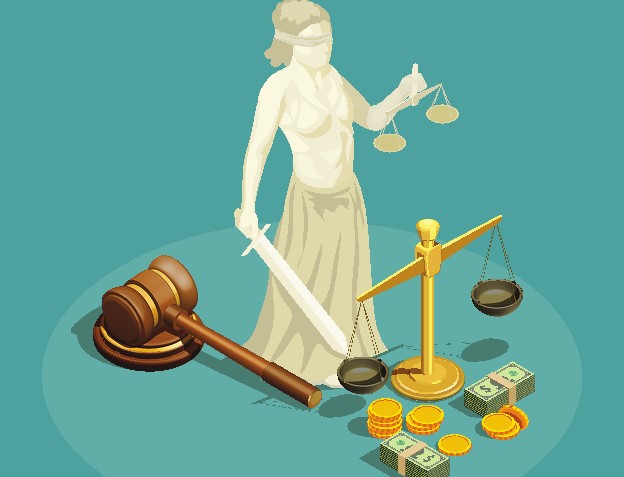
Grades 9-12
Happy EconEdMonth! Celebrate economics all month long by visiting EconEdMonth.org

Don't have an account yet? Sign up for free
Don't have an account yet? Sign up for free
Students will be able to:

In this economics lesson, students will revise a federal budget to understand its contents.
Warm-Up
Explain to students that today they serve as an Economic Advisers to the President of the United States, who is trying to reduce the national deficit. The new president has been elected on the promise of fiscal restraint. She has promised the voters she will not raise taxes, and will not reduce Social Security or Medicare. She has promised interest groups that she will not reduce Commerce Department spending. By law she must pay the net interest owed on the debt. The President’s budget is projected to be balanced, and she promises to avoid a deficit unless the U.S. faces a recession or war.
Modeling
Show students the 2017 federal budget as presented here, called the National Budget Simulator. Review with students the various categories in the national budget. Ask students on the outlays side, what are the top four categories? They are Social Security, Defense, Medicare, and Health. Explain that these are examples of two important types of outlays: discretionary and non-discretionary.
“Discretionary” applies to items that the government can change directly, e.g., to the defense category because, for example, the president can recommend and Congress can vote agreement to buy fewer military airplanes.
“Non-discretionary” applies to items whose spending level is not set directly by Congress, but must be done by changing the rules of payment. For example, the government can’t vote to reduce outlays for social security without changing the rules about who will receive this and how much they will receive. Congress can change both types of outlays, but must use different approaches to adjusting budgets for discretionary and non-discretionary items. Ask students: which might be easier to change with accuracy? Answer: Discretionary can be controlled directly and is thus usually easier to change.
Continue by stating that “Net Interest,” interest payment on the government debt, is a different type of payment because it cannot be changed by Congress in the current session. The amount depends on the level of government debt, which is based on the accumulation of annual deficits over many years, plus the levels of interest rates on that debt. Thus, students will not be considering a change in net interest.
Note: “Undistributed offsetting receipts” consist of collections from the public that are typically market type, for example, proceeds from postage stamp sales, admission charges to national parks, etc. Rather than putting these on the revenue side, they are income that is typically deducted from the spending side.
Next, show students the “Revenues” side of the budget. Ask students: What are the two major sources of revenue for the government? Answer: Individual income taxes and social security payments.
Show students the effects of making a change in the outlays on the National Budget Simulator. Pick any outlay category and increase it by 10% to show students how this affects that category, the overall level of spending, and the budget deficit. Do this for another category showing that the effects of several changes are shown in the totals.
Then pick a category from the revenue side and change it (say, decrease) by 15% and show students again how that effects overall revenue and the deficit.
Explain to students that several unfortunate events have created problems for the hopes of balancing the budget. In a surprise action from abroad, the United States is in danger of a military attack — a turn of events not anticipated in the current budget. At the same time, lingering effects of a past recession reduce the government’s tax revenues and force the government to maintain high spending on unemployment benefits, welfare, housing assistance, food stamps, and other need-based programs. Because of these issues on both spending and revenue sides, the nation’s current deficit level of $665.4 billion will be difficult to maintain.
As a result of the new military threat, Congress passes legislation to increase military spending by 20 percent to pay for increased security within the U.S. and to prepare for a prolonged military response. Ask students: Is this discretionary or non-discretionary outlays? Answers: Discretionary because Congress changed the amount directly. The president signs this bill into law, increasing the projected deficit to $758.1 billion.
The president is committed to their campaign promise not to worsen the deficit in order to maintain support for her reelection; however, because of the military threat and the lingering recession’s impact, she has set a new deficit guideline: to keep the deficit at or below $730.0 billion.
She would like to protect the programs she promised to protect, and she promised not to raise taxes, so her remaining option is to cut spending on other programs. The president turns to you, her trusted economic adviser, for help. Note: While some numbers in this scenario reflect actual data, others are hypothetical for the purposes of this exercise. The basic budget figures are actual Office of Management and Budget data for 2017, including outlays and revenues of 2017. The changes associated with policies are created and constructed for this lesson.
Group Activity
Distribute a copy of the National Budget Simulator Instructions. Be sure to review the instructions together as a class prior to releasing the students to work on the computers. Have students work with a partner on one computer or students can work on their own computers with a partner next to them. Another alternative is to have students work individually. Have students follow the instructions on the worksheet. By the end of this group activity, students should have a printed copy of their budget.
Individual Activity
Point out to students that it is important to look beyond some of the rhetoric on government taxation and spending to determine whether the public services that government provides are valuable. To the extent that such services are worth paying for, the only way to do so is ultimately with tax revenue. Consequently, when thinking about the costs that taxes impose, it is essential to balance those costs against the benefits the nation receives from public services.
Go through the major categories of outlays with the students; for each category, ask who selected that category for program cuts of over 7%. Ask students how that might harm the program? Have students answer the following questions individually on their printed budget plan:
Review their answers as a class. After students have reflected upon their answers, instruct students to individually go back to their computers to update their budget. When the students have reached their target budget, have them print out their results.
Have students complete National Budget Simulation Handout as a way to assess their decision-making skills in this activity.
Activity 1
Have students work in groups or conduct class discussion based on the following:

Grades 9-12

Grades 9-12


Grades 9-12
